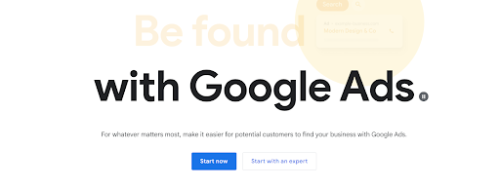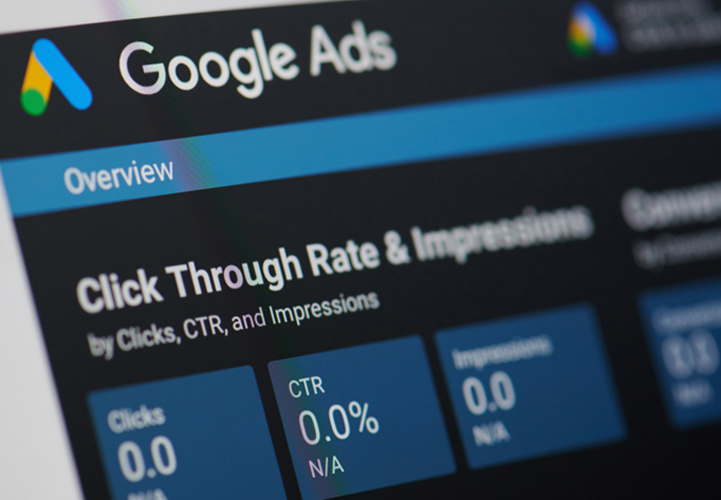Introduction
Whether you’ve heard a bit about PPC marketing and are curious to learn more, or you already know that you want to use PPC to market your business but aren’t sure where to start, you’ve come to the right place! This is the first lesson in PPC, a set of guided courses that will teach you everything you need to know about PPC to make it work for you.
What is PPC?

PPC stands for pay-per-click, a model of digital advertising where the advertiser pays a fee each time one of their ads is clicked. Essentially, you’re paying for targeted visits to your website (or landing page or app). When PPC is working correctly, the fee is trivial because the click is worth more than what you pay for it. For example, if you pay £3 for a click, but the click results in a £300 sale, then you’ve made a substantial profit.
PPC ads come in various formats, including text, images, videos, or a combination. They can appear on search engines, websites, social media platforms, and more. The flexibility in ad formats allows businesses to choose the type that best suits their marketing goals and audience preferences.
Search engine advertising (also known as paid search or search engine marketing) is one of the most popular forms of PPC. It allows advertisers to bid for ad placement in a search engine’s sponsored links when someone performs a search related to their business offering. For example, if we bid on the keyword “google ads audit,” our ad for our free Google Ads Performance Grader may appear on the search engine results page (SERP) for that or a related search.
How does PPC advertising work?
PPC advertising varies across different platforms, but the general process is as follows:
- Choose Your Campaign Type: Select the type of campaign based on your marketing objective. This could be search ads, display ads, shopping ads, or video ads.
- Refine Your Settings and Targeting: Adjust settings to target specific audiences, devices, locations, and schedules. This ensures that your ads are shown to the most relevant users at the right times.
- Set Your Budget and Bidding Strategy: Decide on a budget that you’re willing to spend and choose a bidding strategy that aligns with your goals, such as cost-per-click (CPC), cost-per-thousand impressions (CPM), or cost-per-acquisition (CPA).
- Input Your Destination URL: Provide the URL of the landing page where you want the users to go after clicking on your ad.
- Create Your Ad: Build an engaging ad with compelling copy and relevant visuals if necessary.
Once the ad goes live, where and when your ad appears, and how much you pay for a click on it are all determined algorithmically based on your budget, bid, campaign settings, and the quality and relevance of your ad.
Since all platforms that offer PPC advertising want to keep their users satisfied, they reward advertisers who create relevant, trustworthy pay-per-click campaigns with higher ad positioning and lower costs. This means that well-crafted ads with high relevance and quality scores will generally perform better and be more cost-effective.
To maximise your profits from PPC, it’s essential to learn how to do it right and continuously optimise your campaigns.

See How My Agency Can Drive REAL Results for Small Business
- Pay Per Click Advertising (PPC) –
Dominate page 1 of Google & Social Media from day 1 – see real results! - World-Class Sales Support – Deliver world-class sales training to close MORE business.
- AI-Lead Management – Drive employee accountability using AI lead management generating significant revenues.
Accelerating business growth in a digital world…
What is Google Ads?

Google Ads is the single most popular PPC advertising system in the world. The Google Ads platform enables businesses to create ads that appear on Google’s search engine and other Google properties, such as YouTube and the Google Display Network.
Every time a search is initiated, Google digs into the pool of ads and chooses a set of winners to appear on that search engine results page. The “winners” are chosen based on a combination of factors, including the quality and relevance of their keywords and ad campaigns, as well as the size of their keyword bids. This ensures that the most relevant ads appear for users, which enhances the overall user experience.
How PPC works in Google Ads
When advertisers create an ad, they choose a set of keywords to target with that ad and place a bid on each keyword. So, if you bid on the keyword “immigration lawyer,” you are telling Google you want your ad to appear for searches that match or are related to immigration law.
Google uses a set of formulas and an auction-style process to decide which ads get to appear for any one search. If your ad is entered into the auction, it will first give you a Quality Score from one to 10 based on your ad’s relevance to the keyword, your expected click-through rate, and landing page quality.
It will then multiply your Quality Score by your maximum bid (the most you’re willing to pay for a click on that ad) to determine your Ad Rank. The ads with the highest Ad Rank scores are the ones that show. This system allows winning advertisers to reach potential customers at a cost that fits their budget. It’s essentially a kind of auction.
The infographic below illustrates how the Google Ads auction works:
- Ad Rank Formula: Ad Rank = Quality Score x Maximum Bid
- Quality Score Factors: Relevance of ad to the search query, expected click-through rate, and landing page quality.
- Auction Process: Higher Ad Rank scores lead to better ad positions and lower costs per click.
How to do PPC in Google Ads
Conducting PPC marketing through Google Ads is particularly valuable because, as the most popular search engine, Google gets massive amounts of traffic and therefore delivers the most impressions and clicks to your ads. How often your PPC ads appear depends on which keywords and match types you select. While a number of factors determine how successful your PPC advertising campaign will be, you can achieve a lot by doing the following:
- Bid on Relevant Keywords: Crafting relevant PPC keyword lists, tight keyword groups, and proper ad text are crucial. This ensures that your ads appear for searches that are most likely to convert.
- Focus on Landing Page Quality: Create optimised landing pages with persuasive, relevant content, and a clear call to action tailored to specific search queries. This not only improves your Quality Score but also enhances the user experience, leading to higher conversion rates.
- Improve Your Quality Score: Quality Score is Google’s rating of the quality and relevance of your keywords, landing pages, and PPC campaigns. Advertisers with better Quality Scores get more ad clicks at lower costs. Improving your Quality Score involves ensuring your ads and landing pages are highly relevant to your chosen keywords and provide a good user experience.
- Capture Attention: Enticing ad copy is vital. For display or social ads, eye-catching ad creative is equally important. This helps in attracting clicks and driving traffic to your website.
- Monitor and Adjust: Continuously monitor your campaign performance and make necessary adjustments. This could involve tweaking your ad copy, adjusting your bids, or refining your keyword list to improve results.
How to do effective PPC keyword research
Keyword research for PPC can be incredibly time-consuming, but it is also incredibly important. Your entire PPC campaign is built around keywords, and the most successful Google Ads advertisers continuously grow and refine their PPC keyword list. If you only do keyword research once, when you create your first campaign, you are probably missing out on hundreds of thousands of valuable, long-tail, low-cost, and highly relevant keywords that could be driving traffic to your site.
An effective PPC keyword list should be:
- Relevant: You don’t want to be paying for clicks that aren’t going to convert. That means the keywords you bid on should be closely related to the offerings you sell.
- Exhaustive: Your keyword research should include not only the most popular and frequently searched terms in your niche but also long-tail keywords. These are more specific and less common, but they add up to account for the majority of search-driven traffic. In addition, they are less competitive and therefore less expensive.
- Expansive: PPC is iterative. You want to constantly refine and expand your campaigns and create an environment in which your keyword list is constantly growing and adapting.
Using tools like the Free Keyword Tool can help in finding high-volume, industry-specific keywords to use in your PPC campaigns.
Managing your PPC campaigns
Once you’ve created your new campaigns, you’ll need to manage them regularly to make sure they continue to be effective. In fact, regular account activity is one of the best predictors of account success. You should be continuously analysing the performance of your account and making the following adjustments to optimise your campaigns:
- Continuously Add PPC Keywords: Expand the reach of your PPC campaigns by adding keywords that are relevant to your business. Regularly update your keyword list to include new, relevant terms.
- Add Negative Keywords: Add non-converting terms as negative keywords to improve campaign relevancy and reduce wasted spend. This ensures that your ads are not shown for irrelevant searches.
- Review Costly PPC Keywords: Regularly review expensive, under-performing keywords and shut them off if necessary. This helps in managing your budget effectively and focusing on high-performing keywords.
- Refine Landing Pages: Modify the content and calls to action (CTAs) of your landing pages to align with individual search queries in order to boost conversion rates. Don’t send all your traffic to the same page; tailor the landing pages to match the intent of the searchers.
- Split Ad Groups: Improve click-through rate (CTR) and Quality Score by splitting up your ad groups into smaller, more relevant ad groups, which help you create more targeted ad text and landing pages. This leads to higher relevance and better performance.
Get started with PPC
Ready to get started with PPC? Setting up a Google Ads account is the first step. Follow these steps to get started:
- Create an Account: Sign up for a Google Ads account using your Google credentials.
- Set Up Billing Information: Provide your billing details to start running ads.
- Create Your First Campaign: Choose your campaign type, set your budget, and create your ad groups and ads.
- Launch Your Campaign: Review your settings and launch your campaign. Monitor its performance and make necessary adjustments.
If you’ve already got a Google Ads account, we suggest you use our Free Google Ads Performance Grader to help you zero in on areas of improvement. In 60 seconds or less, you’ll receive a customised report grading your account performance in nine key areas, including click-through rate, Quality Score, and account activity.
And if you’d like help running your PPC ads, check out our digital marketing solutions. Our team of experts can help you create, manage, and optimise your PPC campaigns to ensure you get the best possible results.
Conclusion
PPC marketing is a powerful tool that can drive targeted traffic to your website, increase conversions, and boost your overall digital marketing strategy. By understanding the basics of PPC, how it works, and the best practices for managing your campaigns, you can effectively leverage this advertising model to achieve your business goals. Continuous learning and optimisation are key to staying ahead in the competitive world of PPC. So, start your PPC journey today and see the difference it can make for your business.
Quechua Digital Advisory is a specialists professional services digital agency, based on London, offering end-to-end digital services, from Pay Per Click Advertising to Automation, Website Development, SEO, and much more, including Sales Consultancy. If you’d like to chat, give us a call or take a look at our track record. Our team will be happy to show you how we’ll run your campaigns and make it as effective as possible to accelerate digital growth in a digital world. You can get in touch with us here.














